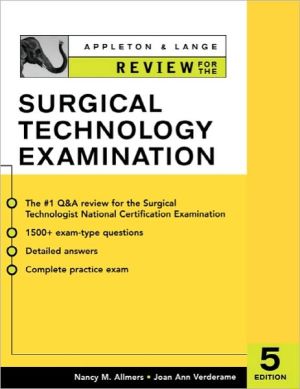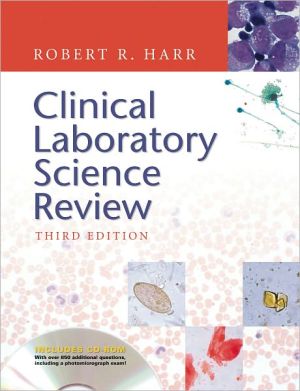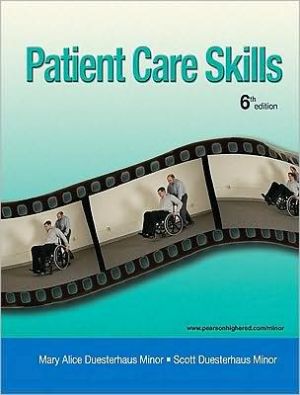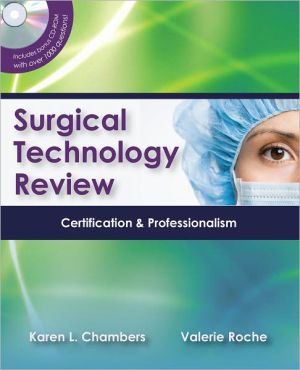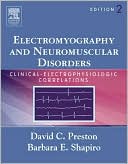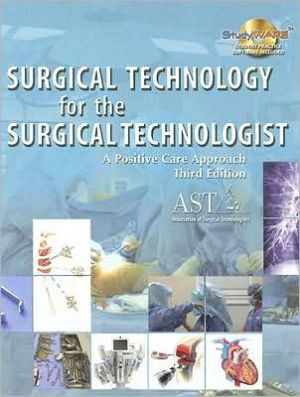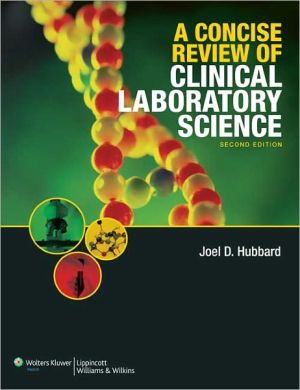Microbiology for Surgical Technologists
Microbiology is part of the core curriculum in surgical technology. It may be presented as a separate course in a two-year program or integrated into a variety of courses in a one-year program. Typically microbiology is taught by a member of the surgical technology program. This text is a comprehensive treatment of the disease-causing organisms that may present with a surgical patient or develop post-surgery as an acquired infection. The text addresses the specific needs of the surgical...
Search in google:
Microbiology is part of the core curriculum in surgical technology. It may be presented as a separate course in a two-year program or integrated into a variety of courses in a one-year program. Typically microbiology is taught by a member of the surgical technology program. This text is a comprehensive treatment of the disease-causing organisms that may present with a surgical patient or develop post-surgery as an acquired infection. The text addresses the specific needs of the surgical technologist in maintaining aseptic technique and caring for surgical patients before, during, and after surgery.
PART I: INTRODUCTION TO MICROBIOLOGY AND MICROORGANISMS. Chapter 1: Introduction to Microbiology. Chapter 2: Introduction to Cells and Cell Structure. Chapter 3: Classifications of Organisms and Genetics. Chapter 4: Microbial Life and Growth. Chapter 5: The Infectious Disease Process. Chapter 6: Aseptic Technique. Chapter 7: Microbial Relationships. Chapter 8: Immunology. Part II: BACTERIOLOGY. Section I: Identification of Specific Bacteria. Chapter 9: Staphylococcus and Aerobic Gram-Positive Cocci. Chapter 10: Streptococcus and Related Aerobic Gram-Positive Cocci. Chapter 11: Aerobic Gram-Positive Bacilli, Coccobacilli, and Coryneform Bacilli. Chapter 12: Neisseria and Aerobic Gram-Negative Cocci. Chapter 13: Other Gram-Negative Bacilli and Coccobacilli. Chapter 14: Haemophilus Chapter 15: Gram-Negative Enteric Bacilli. Chapter 16: Non-Fermenting Aerobic Gram-Negative Bacilli. Chapter 17: Curved Aerobic Gram-Negative Bacilli. Chapter 18: Gram-Negative Anaerobic Bacteria. Chapter 19: Gram-Positive Anaerobic Bacteria. Chapter 20: Mycobacteria. Chapter 21: Spirochetes. Chapter 22: Rickettsia. Section II: Pathogens of Body Fluids and Systems. Chapter 23: Cerebrospinal Fluid and Other Body Fluids. Chapter 24: Blood. Chapter 25: Respiratory System. Chapter 26: Eye, Ear, Nose, and Throat. Chapter 27: Genitourinary System. Chapter 28: Gastrointestinal System. Chapter 29: Integumentary System. Chapter 30: Internal Tissues. Part III: VIROLOGY.Chapter 31: Characteristics of Viruses. Chapter 32: Significant Viruses. Chapter 33: Emerging Viral Infections Part IV PARASITOLOGY. Chapter 34: Characteristics and General Information of Parasites. Chapter 35: Intestinal Protozoans. Part V: MYCOLOGY. Chapter 36: Characteristics and General Information of Fungi and Yeasts. Chapter 37: Opportunistic Fungi. Chapter 38: Yeasts Part VI: WOUND HEALING. Chapter 39: Wound Healing and Microorganisms

